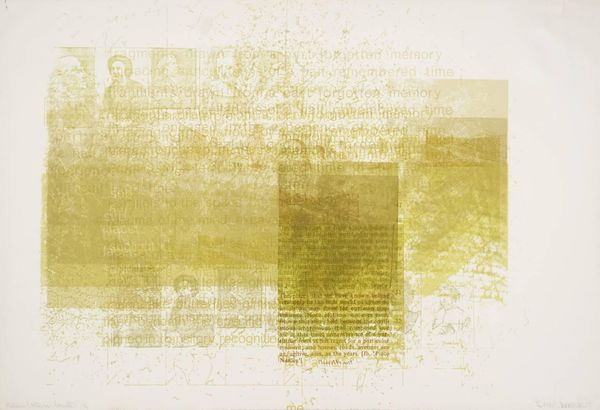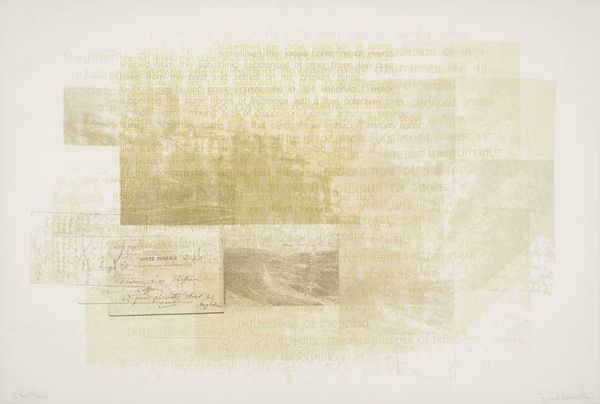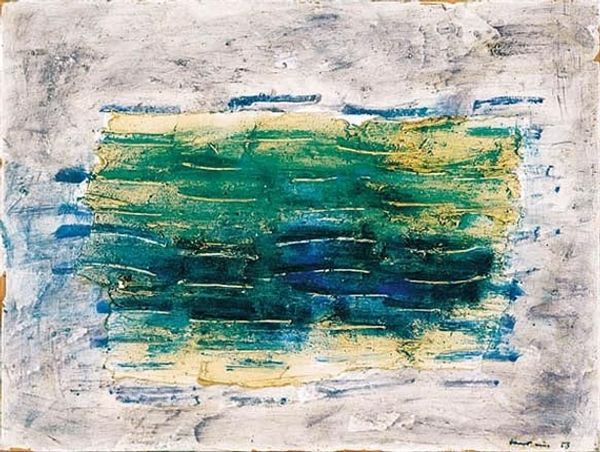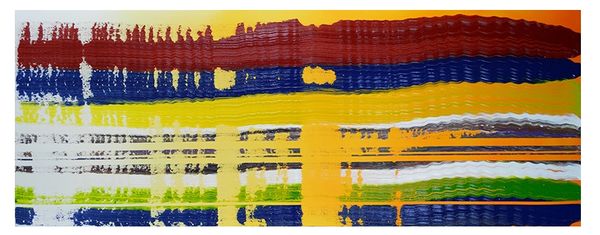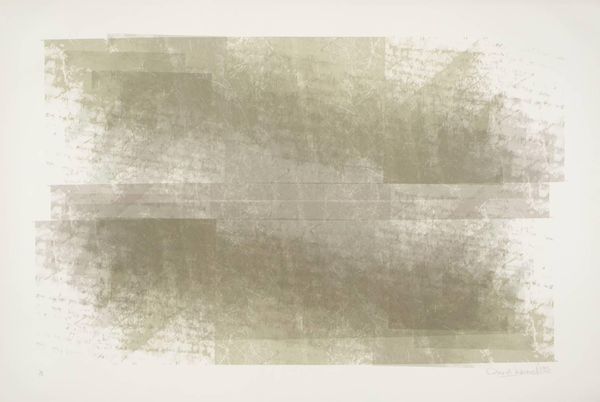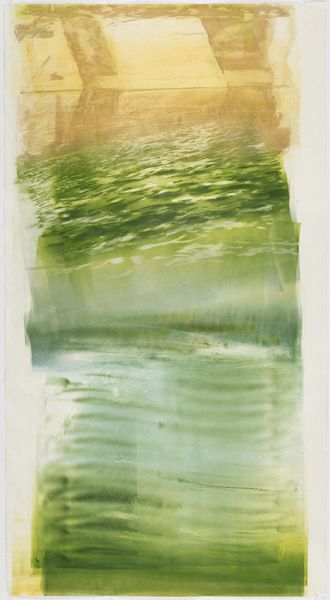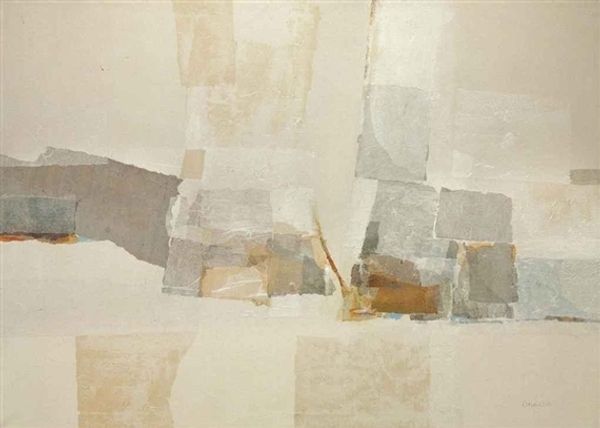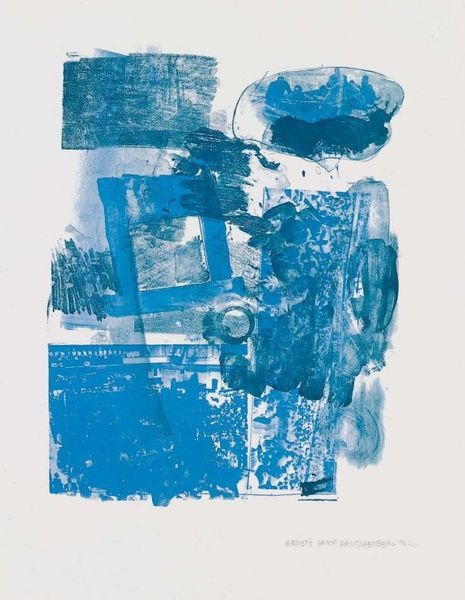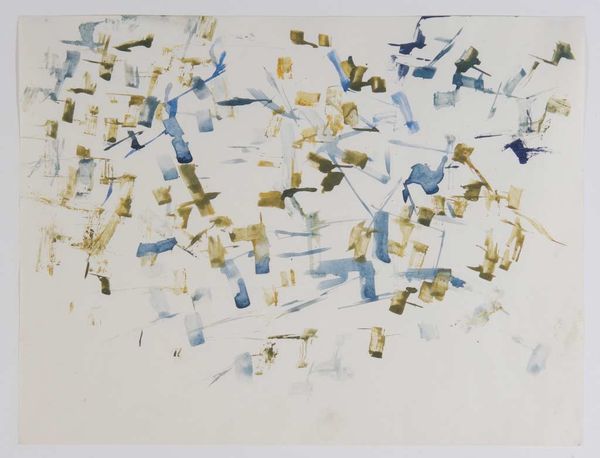
Dimensions: image: 712 x 1050 mm
Copyright: © David Leverett | CC-BY-NC-ND 4.0 DEED, Photo: Tate
Curator: David Leverett, born in 1938, created this work, "Two Faces of a Place." It's currently held in the Tate Collections and presents a fascinating interplay of image and text. Editor: My first thought? Fragmented memories. It feels like a landscape seen through a broken window, or a dream slowly fading. Curator: The layering here is key. Leverett is exploring how we construct meaning through both visual representation and language, challenging the idea of a single, unified perspective. It brings up questions of accessibility, particularly with the script overlaying the landscape. Who is invited to "read" this place? Editor: Absolutely. It’s like the landscape is trying to speak, but the words are almost illegible, like a half-forgotten poem scribbled in a fever dream. Are we meant to decipher it, or just feel the texture of the words? It's like he's blurring the line between seeing and feeling. Curator: Perhaps both. The act of trying to decipher it, of engaging with the fragmented text, becomes part of the experience. The "touch of Braille" that's actually written there is very interesting too: is the landscape inviting you to 'read' it? I keep thinking about what it means to 'read' a landscape at all. Editor: You know, looking at it again, there's a certain melancholy to it. It's beautiful, but also unsettling. Like a place that's been loved, lost, and remembered imperfectly. Curator: Precisely. It makes me consider our relationship with place, memory, and the stories we tell ourselves about them. Editor: It really is a piece that stays with you, whispering its secrets long after you've walked away.
